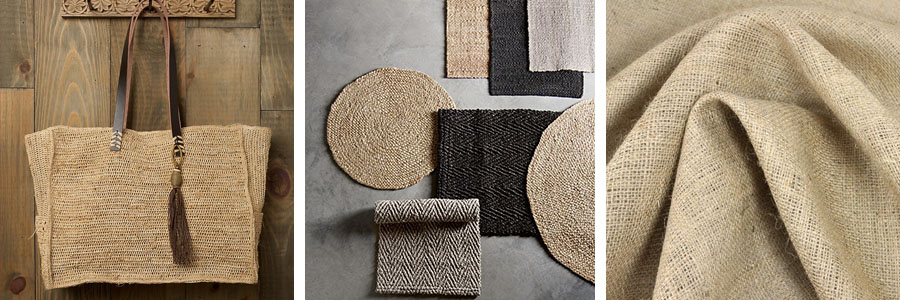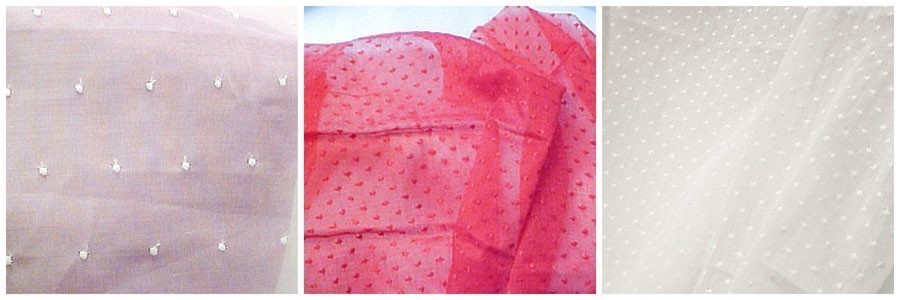Jute fabrics
Jute is known as the ‘Golden Fibre’ due to its golden brown colour and its importance. In terms of usage, production and global consumption, jute is second only to cotton. It is the fibre used to make hessian sacks and garden twine. Jute is environmentally friendly as well as being one of the most affordable fibres; jute plants are easy to grow, have a high yield per acre and, unlike cotton, have little need for pesticides and fertilizers. Jute is a bast fibre, like flax and hemp, and the stems are processed in a similar way.

Jute fibres are very long (1 to 4 metres), silky, lustrous and golden brown in colour. In contrast to most textile fibres which consist mainly of cellulose, jute fibres are part cellulose, part lignin. Cellulose is a major component of plant fibres while lignin is a major component of wood fibre; jute is therefore partly a textile fibre and partly wood. Jute fibre has strength, low cost, durability and versatility.

Jute is used where low cost is more important than durability, for example in coffee sacks and cotton bale covers. You are probably familiar with jute as twine used to tie garden plants, and as hessian fabric (or burlap in the US). Jute is used in shopping bags, carpets and rugs, backing for linoleum floor covering, chair coverings and environmentally friendly coffins.
Buy jute fibre for spinning!
Jute is also useful as a geotextile fabric laid over soil to stabilise it against landslides and to control erosion or weeds. The fabric helps to keep the moisture in and holds the soil in place, whilst the open weave structure of the fabric allows space for plants to grow. As the plants get established, the jute fabric starts to biodegrade. This fabric is also used to wrap plant root balls, as it allows water and air to reach the roots.
ball of hessian twine or string
Experimental use of jute fibre in commercial papermaking has proved moderately successful and may eventually supplement pine and spruce as papermaking fibres.
